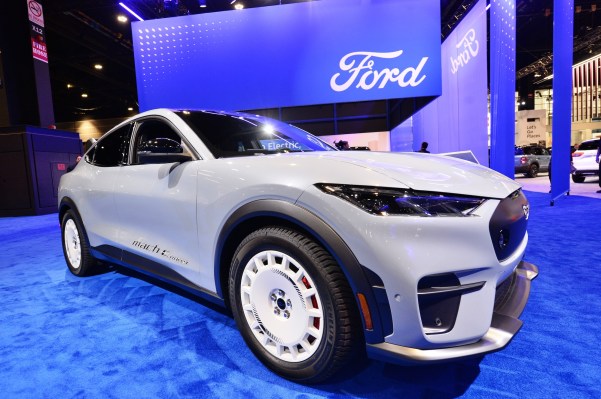
Ford is cutting prices of its all-electric 2023 Mustang Mach-E by has much as $8,100 as the automaker attempts to rid itself of inventory and compete with Tesla and its increasingly cheaper EVs.
Total market share of new EV sales has grown, reaching nearly 8% in U.S. in 2023. But as market share has expanded, the consumer base has shifted from early adopters to early majority — a group unwilling to pay a premium for EVs, Ford CFO John Lawler told TechCrunch in an interview earlier this month.
The price cuts come after the Mach-E lost eligibility for a $3,750 tax credit and sales of the all-electric SUV fell 51% in January versus the same month in 2023. Overall EV sales were down 11% from January last year.
The Detroit Free Press previously reported the new prices, which were sent to the automaker’s network of dealers.
Ford confirmed with TechCrunch the price cuts, which are only for model year 2023 Mustang Mach-E vehicles and range between $3,100 and $8,100. Ford Credit is also offering a couple of deals, including 0% financing for 72 months for qualified buyers and a $7,500 cash incentive to those who lease. That extra incentive is in addition to the tax credit Ford Credit already passes on to consumers.
“The Mustang Mach-E is America’s No.2 EV SUV in 2023 and Ford is America’s No.2 EV brand,” Ford spokesperson Marty Günsberg wrote in an emailed statement. “We are adjusting pricing for MY23 models as we continue to adapt to the market to achieve the optimal mix of sales growth and customer value.”

Image Credits: Ford
Automakers, including Ford, have been racing to compete with Tesla amid softening demand for premium-priced EVs.
“Tesla ramped the 3 and the Y at the same time, which we believe created a false sense of demand,” Lawler said. “It was two new vehicles that was now in a segment, where it was affordable for early adopters and supply was very limited. And therefore, then you had this incredible growth, but their production was limited. And so it looked like there was this incredible demand, but it was the early adopters.”
Lawler said when Tesla started dropping prices, the conventional wisdom was that the company was trying to disrupt the industry and “keep the rest of us out.” Instead, he theorized that Tesla was responding to the same changing market conditions.
Tesla spent the latter half of 2022 and all of 2023 tinkering with the price of its four models: the Model S, Model X and popular Model 3 and Model Y vehicles. The company, which doesn’t use a dealership model and instead sells directly to consumers, slashed prices every quarter last year — a tactic that pumped up sales and drove down profits.
Tesla shipped a record number of electric vehicles in the fourth quarter, which helped it reach 1.81 million deliveries in 2023. Operating income also took a hit due to increased R&D costs, the ramp up of the Cybertruck and continued price cuts for its best-selling vehicles, the Model 3 and Model Y.
techcrunch.com




